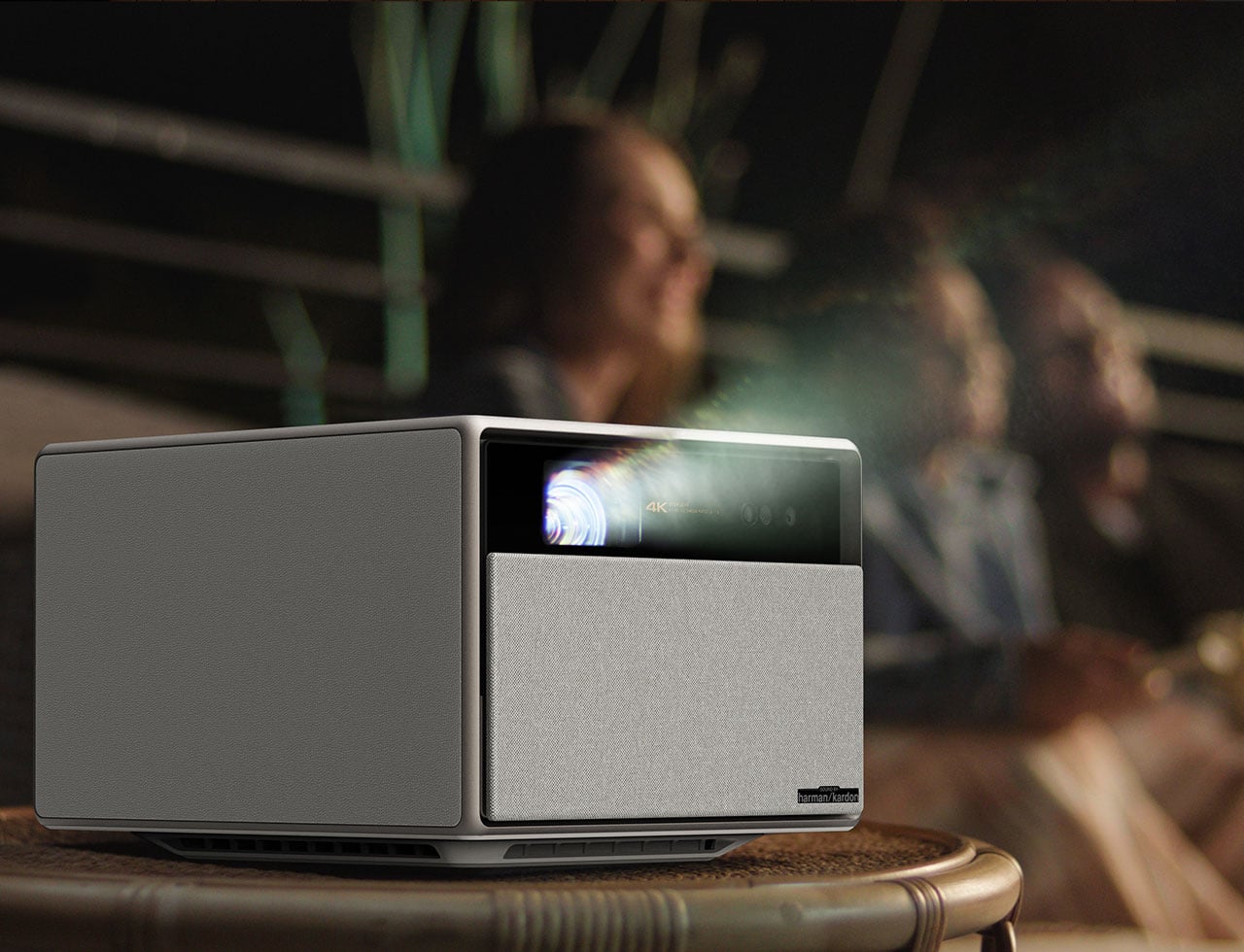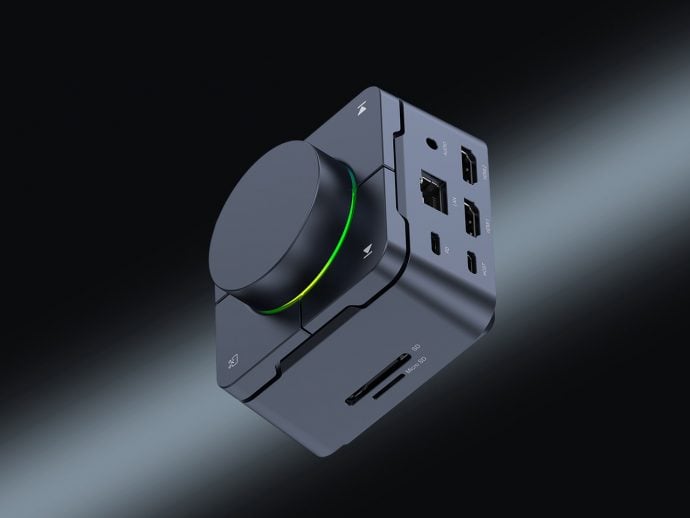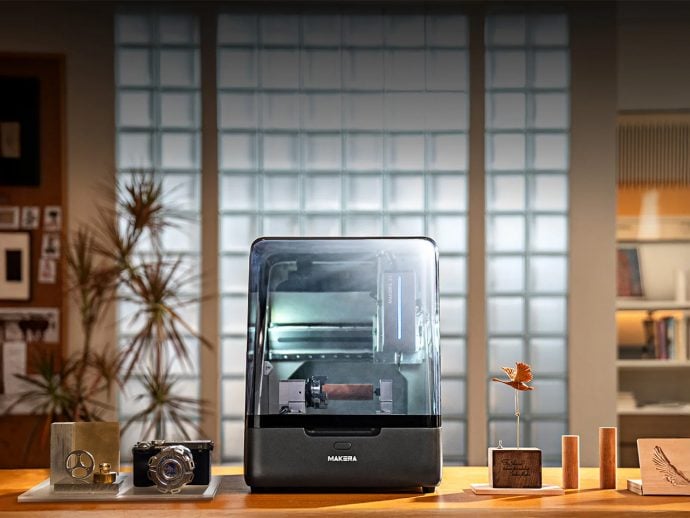
I bought a projector around the time the pandemic began. My rented apartment was small, I didn’t want to mount a TV on the wall, and moreover, I liked the idea of being able to watch movies either in the living room or the bedroom. Besides, it’s also when streaming at home absolutely exploded because nobody was going to the theaters anymore. Projectors have existed for over a century at this point, but for a major part of the modern tech discourse, TVs have dominated the conversation when it came to consumers. Every home HAD to have a couch facing a TV… but not anymore. Projectors are finally becoming smarter, higher in quality, more compact/sleek, and more affordable. However, choosing the right projector is a tricky affair. Sure, you could go with your budget and compare ratings on Amazon, but before you do, it helps to understand what TYPE of projector you want to buy. Broadly, there are two kinds of projectors worth looking into – you’ve got your standard projectors that need to be kept a few tens of feet away from a wall or screen… but you’ve also got ultra-short throw projectors, that need to just sit a couple inches away from their projection surface.
Choosing the right projector for your needs in 2024 can feel like navigating a maze of technical jargon and endless options. With advancements in both ultra-short throw and regular projectors, making an informed decision requires understanding the strengths and limitations of each. Whether you’re setting up a home theater, outfitting a classroom, or enhancing your office conference room, knowing which type of projector suits your space and needs is crucial.
What are Ultra-short Throw Projectors?

Ultra-short throw (UST) projectors are designed to project large images from a very short distance, as their name suggests. Typically placed just inches away from the screen or wall, these projectors are perfect for small spaces where traditional projectors would be impractical. The key feature of UST projectors is their ability to produce a big, bright image without requiring a significant throw distance.
UST projectors have several advantages:
- Space-saving: They can sit directly below or above the projection surface, making them ideal for small rooms or areas with limited space.
- Installation flexibility: These projectors can be placed on a console, mounted on the ceiling, or even integrated into furniture, offering various setup options.
- Reduced shadows and glare: Since the projector is close to the screen, shadows from people moving around are minimized, and direct glare from the light source is less likely to affect viewers.
What are Regular (Long-throw) Projectors?

Regular or long-throw projectors are the traditional choice for home theaters, classrooms, and large venues. These projectors need a considerable distance from the screen to project a clear, large image. The longer throw distance allows them to achieve higher brightness and resolution, making them suitable for various environments.
Advantages of regular projectors include:
- Cost-effectiveness: Long-throw projectors often offer more bang for your buck, with a range of options at various price points.
- Higher brightness: These projectors are typically brighter, making them suitable for larger spaces or environments with ambient light.
- Variety: There’s a broader selection of long-throw projectors, providing more options in terms of features and specifications.

Performance Comparison
Picture Quality: Both UST and regular projectors can deliver excellent picture quality, but there are nuances to consider. UST projectors often use laser technology, providing bright and vibrant images with good contrast. However, the proximity to the screen can sometimes result in a slight drop in edge clarity. Regular projectors, on the other hand, benefit from longer throw distances that enhance image sharpness and uniformity.
Installation: UST projectors shine in ease of installation. Place it close to the wall, connect your sources, and you’re ready to go. This simplicity is a stark contrast to regular projectors, which require careful placement, mounting, and alignment to ensure a proper image. Adjusting keystone and focus can be a time-consuming process, especially in rooms where the projector must be mounted at a significant distance from the screen.
Sound: While most projectors come with built-in speakers, the quality varies significantly too. With UST projectors, you have the benefit of the sound emanating from as near the screen as possible. With regular projectors, if you’re relying on the projector’s built-in speaker, the sound will usually emerge from behind you, with the visuals in front of you, creating a mild dissonance of sorts. However, both speakers can be hooked to a home theater setup, allowing you to effectively outsource sound to a more expertly tuned device fit for the job.

Use Cases and Suitability
Choosing between a UST and a regular projector largely depends on your specific use case:
Ultra-short Throw Projectors are best suited for:
- Small spaces: Apartments, small meeting rooms, and classrooms where space is at a premium.
- Minimalist setups: If you prefer a clean, uncluttered look, UST projectors can blend seamlessly into the room’s design.
- Interactive whiteboards: Ideal for educational environments where students and teachers frequently interact with the projection surface.
Regular Projectors excel in:
- Home theaters: Offering a cinema-like experience with a larger, brighter image, regular projectors are perfect for dedicated home theater rooms.
- Large venues: Conference halls, auditoriums, and outdoor events benefit from the higher brightness and larger image sizes that long-throw projectors can provide.
- Budget-conscious setups: If you’re looking to get the most value, regular projectors offer a wider range of affordable options.

Cost and Value
When it comes to cost, UST projectors tend to be more expensive upfront. Their advanced optics and compact designs come at a premium, with prices starting around $1,500 and going up to several thousand dollars for high-end models. However, the long-term value includes easier setup and less need for additional mounting hardware or cabling, potentially offsetting the initial investment.
Regular projectors, on the other hand, offer a broader price range. Entry-level models can be found for as low as $300, while high-end models still cost several thousand dollars. Despite potentially higher installation costs due to mounts and longer cables, the ongoing costs can be lower. Replacement lamps for regular projectors are generally cheaper and more widely available than those for UST projectors.

Technological Advancements
Ultra-short Throw Projectors have seen significant advancements:
- Laser Technology: Many UST projectors now use laser light sources, offering longer life spans, brighter images, and better color accuracy.
- Smart Features: Integration with smart home systems, built-in streaming apps, and voice control are becoming common, making them more versatile and user-friendly.
Regular Projectors continue to evolve with:
- 4K and HDR: High-resolution and high-dynamic-range imaging are now standard in many models, providing stunning visual quality.
- LED Advancements: Improved LED technology offers better brightness, longevity, and color reproduction, reducing the need for frequent bulb replacements.
These advancements have significantly enhanced the performance and user experience of both types, making them viable options for different needs.

User Experience and Reviews
Feedback from users highlights the strengths and weaknesses of each type:
Ultra-short Throw Projectors:
- Pros: Users appreciate the ease of setup, modern design, and the ability to place the projector close to the screen. The integrated smart features and quality speakers are also frequently praised.
- Cons: Some users report issues with image uniformity and edge clarity. The higher cost can be a barrier for budget-conscious buyers.
Regular Projectors:
- Pros: Users enjoy the high brightness and sharp image quality, especially in darkened rooms. The variety of options and price points is another strong selling point.
- Cons: The setup can be complex and time-consuming. External speakers are often necessary for good sound quality. The projection can sometimes get obscured by people moving around in the room.

Future Trends and Predictions
Looking ahead, several trends are likely to shape the projector market in 2024 and beyond:
- AI Integration: Expect projectors to become smarter, with AI helping to optimize image settings, adjust focus automatically, and even provide content recommendations.
- Enhanced Connectivity: Improvements in wireless technology and seamless integration with other smart devices will make projectors even more versatile.
- Enhanced Quality: Television displays have made leaps and bounds in the past 20 years that projectors haven’t. Projectors today have great contrast and can go up to 4K in quality if you spend a good buck, but they always need to be used in a low-light setting to be visible. Future projectors could have great quality with higher brightness levels, allowing them to be used even in moderately lit rooms.
It’s worth knowing what you’re getting into when you buy a projector. Just like a TV, a projector is something you’ll probably expect at least a decade’s worth of use out of (nobody changes TVs as rapidly as they change their phones) so make sure you weigh all the pros and cons of each kind of projector type before springing to buy one. If it’s great quality in a compact setup, UST projectors have you covered. If budget and portability are your biggest concerns, there are a whole slew of portable projectors you can buy that are about as cheap as a mid-range smartphone.

Choosing between an ultra-short throw and a regular projector depends on your specific needs, space, and budget. UST projectors offer convenience, modern aesthetics, and smart features, making them ideal for small spaces and minimalist setups. Regular projectors, with their high brightness and a broad range of options, are perfect for home theaters and large venues.
Ultimately, both types of projectors have their unique advantages and are continually improving with technological advancements. Whether you prioritize ease of installation or superior image quality, there’s a projector out there that will meet your needs. So, whether you’re planning to host epic movie nights or deliver stunning presentations, 2024 has the perfect projector for you. And remember, choosing the right projector isn’t just about the specs—it’s about finding the one that makes you the star of the show.






